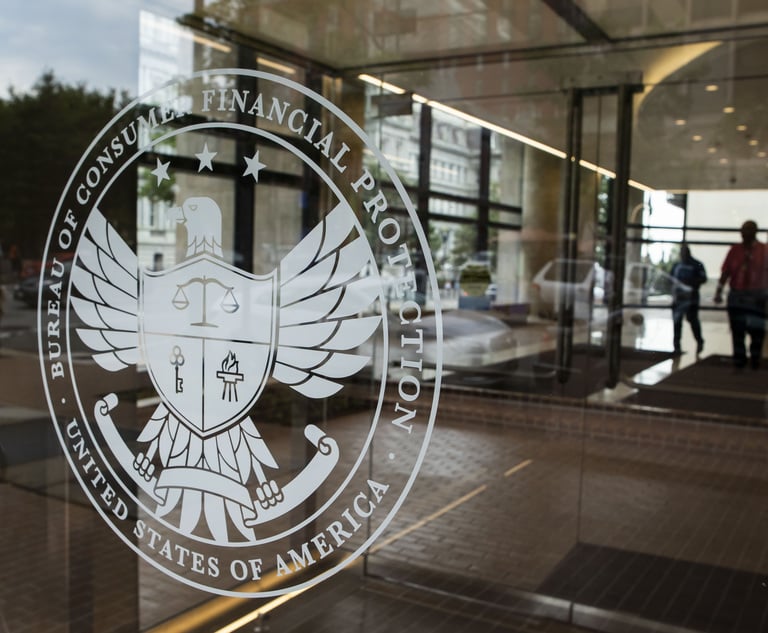Predictions and Pitfalls for 2018 on Closing Gaps in Cybersecurity
Unfortunately, the ever-changing digital environment that we all now live in will continue to drive all types of data threats in the new year ahead,…
November 30, 2017 at 04:49 PM
3 minute read
The original version of this story was published on Law.com

Unfortunately, the ever-changing digital environment that we all now live in will continue to drive all types of data threats in the new year ahead, especially since many adversarial organizations are well-funded, smart and determined.
Even closing the security gap between information security and operational IT will be a critical need to address in the new year ahead. But, what are all of the check-list items that organizations need to overcome in 2018 in order to keep their customers' data off of the black market?
To answer this question, Inside Counsel sat down with Kurt Long, CEO and Founder of FairWarning, to discuss the ongoing pitfalls that organizations will face with cyber security in 2018, the role that innovative solutions like AI and data analysis will play in the year ahead, and predictions about the types of organizations that will survive cyber threats in 2018.
As we move into 2018, organizations will continue to face damages associated with insider threats. In fact, 60 percent of all attacks are carried out by insiders. Organizations across industries from healthcare to financial services have adopted cloud technologies in recent years, and with this shift, employees now have more access to sensitive data.
“Data breaches associated with insider threats and collusion to sell data to dark-web actors will remain a growing threat,” he said. “Our own government in 2017 is struggling to identify an insider who is leaking highly secretive cyberweapons of the NSA. Organizations should ditch the 'mote mentality' of security and focus on a people-centric security approach.”
Survival of 2018 threats comes down to preparedness and a people-centric security approach, according to Long, as 66 percent of organizations won't survive a cyber-attack, according to Ponemon's Cyber Resilient Organization study.
“Companies who survive a cyber attack or a breach will have rehearsed the scenario beforehand, and likely have an incident response plan in case of a security incident,” he explained. “The response and survival of your organization is dependent on the skills and preparedness of your employees. Organizations who have driven a culture of security into their organization will likely face far less damages in the case of an attack.”
So what are the gaps that will still need to be closed in the year ahead? Per long, in 2018, businesses must address the human element of cybersecurity. Breaches and attacks will continue to occur and cause damage, and can only be mitigated by strengthening the workforce. So, organizations should get serious about vetting out a strong workforce and training the entire organization in security.
He added, “It is no longer the job of the CISO to thwart attacks, but the entire company. They should start with implementing a plan that outlines best processes, implementing monitoring and security technologies, in addition to employee training.”
Amanda G. Ciccatelli is a Freelance Journalist for Corporate Counsel and InsideCounsel, where she covers intellectual property, legal technology, patent litigation, cybersecurity, innovation, and more.
This content has been archived. It is available through our partners, LexisNexis® and Bloomberg Law.
To view this content, please continue to their sites.
Not a Lexis Subscriber?
Subscribe Now
Not a Bloomberg Law Subscriber?
Subscribe Now
NOT FOR REPRINT
© 2025 ALM Global, LLC, All Rights Reserved. Request academic re-use from www.copyright.com. All other uses, submit a request to [email protected]. For more information visit Asset & Logo Licensing.
You Might Like
View All
As AI-Generated Fraud Rises, Financial Companies Face a Long Cybersecurity Battle

AI Adoption, Data Center Building Boom Opening More Doors for Cybercriminals, Many of Them Teenagers


Legal Departments’ Lack of Third-Party Oversight Leaving Small, Midsized Banks Exposed
4 minute readTrending Stories
- 1$15K Family Vacation Turned 'Colossal Nightmare': Lawsuit Filed Against Vail Ski Resorts
- 2Prepare Your Entries! The California Legal Awards Have a New, February Deadline
- 3DOJ Files Antitrust Suit to Block Amex GBT's Acquisition of Competitor
- 4K&L Gates Sheds Space, but Will Stay in Flagship Pittsburgh Office After Lease Renewal
- 5US Soccer Monopoly Trial Set to Kick Off in Brooklyn Federal Court
Who Got The Work
Michael G. Bongiorno, Andrew Scott Dulberg and Elizabeth E. Driscoll from Wilmer Cutler Pickering Hale and Dorr have stepped in to represent Symbotic Inc., an A.I.-enabled technology platform that focuses on increasing supply chain efficiency, and other defendants in a pending shareholder derivative lawsuit. The case, filed Oct. 2 in Massachusetts District Court by the Brown Law Firm on behalf of Stephen Austen, accuses certain officers and directors of misleading investors in regard to Symbotic's potential for margin growth by failing to disclose that the company was not equipped to timely deploy its systems or manage expenses through project delays. The case, assigned to U.S. District Judge Nathaniel M. Gorton, is 1:24-cv-12522, Austen v. Cohen et al.
Who Got The Work
Edmund Polubinski and Marie Killmond of Davis Polk & Wardwell have entered appearances for data platform software development company MongoDB and other defendants in a pending shareholder derivative lawsuit. The action, filed Oct. 7 in New York Southern District Court by the Brown Law Firm, accuses the company's directors and/or officers of falsely expressing confidence in the company’s restructuring of its sales incentive plan and downplaying the severity of decreases in its upfront commitments. The case is 1:24-cv-07594, Roy v. Ittycheria et al.
Who Got The Work
Amy O. Bruchs and Kurt F. Ellison of Michael Best & Friedrich have entered appearances for Epic Systems Corp. in a pending employment discrimination lawsuit. The suit was filed Sept. 7 in Wisconsin Western District Court by Levine Eisberner LLC and Siri & Glimstad on behalf of a project manager who claims that he was wrongfully terminated after applying for a religious exemption to the defendant's COVID-19 vaccine mandate. The case, assigned to U.S. Magistrate Judge Anita Marie Boor, is 3:24-cv-00630, Secker, Nathan v. Epic Systems Corporation.
Who Got The Work
David X. Sullivan, Thomas J. Finn and Gregory A. Hall from McCarter & English have entered appearances for Sunrun Installation Services in a pending civil rights lawsuit. The complaint was filed Sept. 4 in Connecticut District Court by attorney Robert M. Berke on behalf of former employee George Edward Steins, who was arrested and charged with employing an unregistered home improvement salesperson. The complaint alleges that had Sunrun informed the Connecticut Department of Consumer Protection that the plaintiff's employment had ended in 2017 and that he no longer held Sunrun's home improvement contractor license, he would not have been hit with charges, which were dismissed in May 2024. The case, assigned to U.S. District Judge Jeffrey A. Meyer, is 3:24-cv-01423, Steins v. Sunrun, Inc. et al.
Who Got The Work
Greenberg Traurig shareholder Joshua L. Raskin has entered an appearance for boohoo.com UK Ltd. in a pending patent infringement lawsuit. The suit, filed Sept. 3 in Texas Eastern District Court by Rozier Hardt McDonough on behalf of Alto Dynamics, asserts five patents related to an online shopping platform. The case, assigned to U.S. District Judge Rodney Gilstrap, is 2:24-cv-00719, Alto Dynamics, LLC v. boohoo.com UK Limited.
Featured Firms
Law Offices of Gary Martin Hays & Associates, P.C.
(470) 294-1674
Law Offices of Mark E. Salomone
(857) 444-6468
Smith & Hassler
(713) 739-1250






